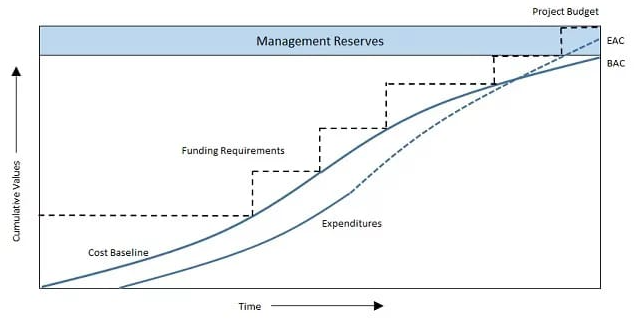New PMP Question & Answers with explanation
While looking at the project cost baseline graph shown below, a project manager sees that the stair-step line’s last point is higher than the estimate at completion (EAC). What does this relationship mean for the project?

For the project with Earned Value (EV) = $350, Actual Cost (AC) = $300 and Planned Value (PV) = $400. The original project budget is $1,000. Assuming the remaining work will be impacted by the current cost performance and current schedule performance, what is the Estimate At Completion (EAC) of the project?
For the project with Earned Value (EV) = $300, Actual Cost (AC) = $250 and Planned Value (PV) = $300. The original project budget is $1000. Assuming the project will continue to spend money at the same rate, what is the Estimate At Completion (EAC) of the project?
For a project with Earned Value (EV) = $300, Actual Cost (AC) = $350 and Planned Value (PV) = $400. The overall project budget is $1,000. Assume that you will continue to spend at the same rate as you are currently spending. What is the Variance At Completion (VAC)?
You are the project manager of a road paving project. A total of 10km of road is to be paved over a 5-month period. The total budget for the project is $10,000. The project is now at the end of the 3rd month with 8km of road paved and $8,000 spent. The Schedule Performance Index (SPI) for the project is: